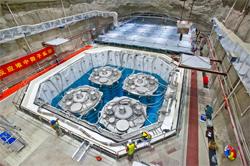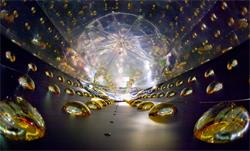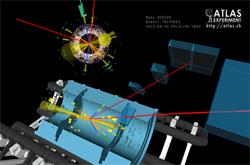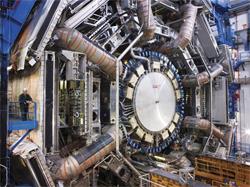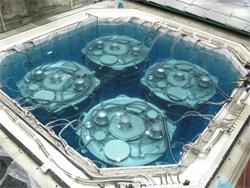Two leading scholars have been invited to deliver public lectures on Particle Physics organized by the Research Grants Council on 30 July 2016 (Saturday). Details of the lectures are as follows:
| Topic | Speaker | Time |
|---|---|---|
| Studying the Neutrinos - Chasing after Ghost Particles | Dr Jason Chun-shing Pun (Principal Lecturer, Department of Physics, The University of Hong Kong) | 2:30 pm - 3:30 pm |
| The Quest for Fundamental Structures of Matter | Professor Ming-chung Chu (Professor, Department of Physics, The Chinese University of Hong Kong | 3:30 pm - 4:30 pm |
Venue: Lecture Hall, Hong Kong Science
Museum (Location
Map)
Language: Cantonese
Free admission on a first-come, first-served
basis.
For enquires, please contact us at 2524
3987 or rgc@ugc.edu.hk.
First Session
Topic: Studying the Neutrinos - Chasing
after Ghost Particles
Speaker: Dr Jason Chun-shing Pun
Time: 30 July 2016 (Saturday) 2:30pm - 3:30pm
|
Brief introduction: Among all the elementary particles
- the fundamental building blocks
of all matter - neutrinos are the
most abundant in numbers but yet the
least understood. Many exciting discoveries
had been made recently - we now know
neutrinos have mass, and they transform
from one type to another through neutrino
oscillation. Properties of neutrinos
have profound implications in particle
physics, cosmology and astrophysics;
they may hold the key to explaining
why matter dominates anti-matter in
the universe, a key condition of our
existence. In this talk, the speaker
will introduce the tremendous efforts
by scientists to chase down these
"ghost particles," including
recent results from the Daya Bay Reactor
Neutrino Experiment, which represents
the first time Hong Kong scientists
participate in a major international
particle physics experiment. About the Speaker: Dr Jason Chun-shing Pun is currently Principal Lecturer at the Department of Physics, The University of Hong Kong. Research interest of Dr Pun includes particle physics, cosmic ray physics, astrophysics of supernovae, supernova remnants and X-ray binaries, and the scientific studies of light pollution. He is one of the founding collaborators of the Daya Bay Reactor Neutrino Experiment, which used neutrinos emitted from the Daya Bay nuclear reactor complex, about 50 km from Hong Kong, to study the phenomenon of neutrino oscillation. |
Detectors inside the Daya Bay Far Hall (Credit: Lawrence Berkeley National Laboratory)
Inside the anti-neutrino detector of the Daya Bay Reactor Neutrino Experiment (Credit: Lawrence Berkeley National Laboratory) |
Second Session
Topic: The Quest for Fundamental Structures
of Matter
Speaker: Professor Ming-chung Chu
Time: 30 July 2016 (Saturday) 3:30pm - 4:30pm
|
Brief introduction: Since ancient time, the idea that
all matter is made of indivisible
'atoms' has been embraced by many
philosophers and scientists. The properties
of these 'atoms' - or elementary particles
in modern terminology - are therefore
believed to be fundamental ingredients
for understanding all physical phenomena
in Nature. The recent breakthroughs
in elementary particle physics - including
the discovery of the Higgs particle
(known as 'the God particle' to the
public) at the Large hadron Collider
(LHC) at CERN and a new type of neutrino
oscillation by the Daya Bay Reactor
Neutrino Experiment - mark the beginning
of a golden era in fundamental physics.
The discoveries are important not
only in themselves, but also in opening
up a window of opportunities to discover
new physics that may revolutionize
our understanding of the fundamental
structure of matter and the universe!
The speaker will introduce at an elementary
level these achievements and their
implications, as well as a range of
new physics that particle physicists
will search for. About the Speaker: Professor Ming-chung Chu obtained his B.Sc. and PhD degrees both at California Institute of Technology (Caltech). He held research positions at MIT and Caltech before joining the Chinese University of Hong Kong in 1995. His current research interest includes astrophysics, cosmology, and particle physics. |
Event display of a Higgs boson candidate decaying into two electrons and two muons in the ATLAS detector (Credit: CERN)
View of the ATLAS detector opened (Credit: CERN)
The Daya Bay Far Experimental Hall with 4 antineutrino detectors (Credit: Qiang Xiao) |
